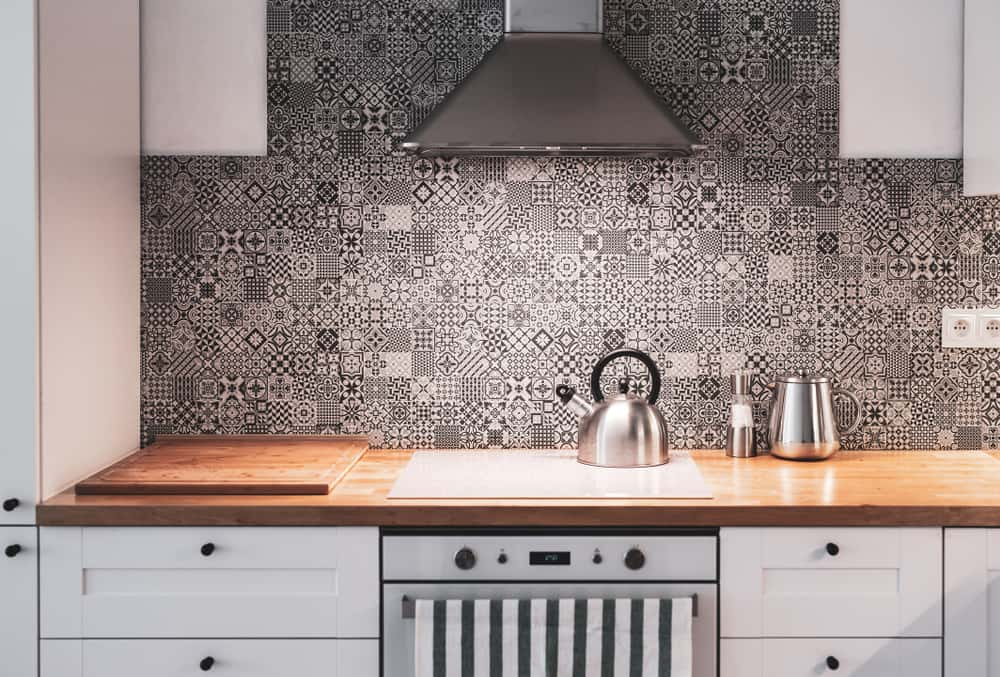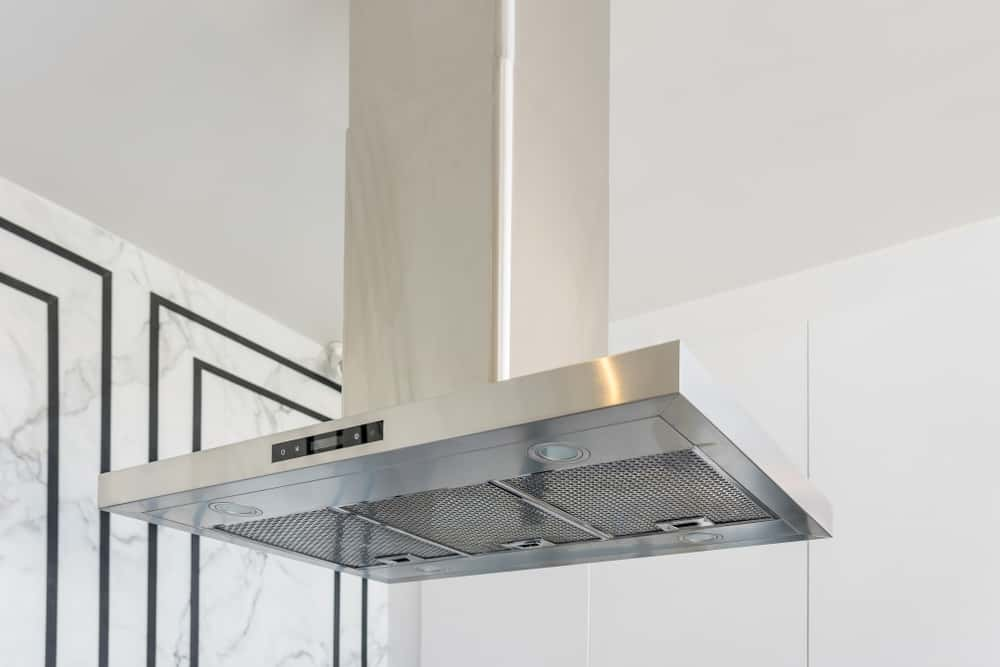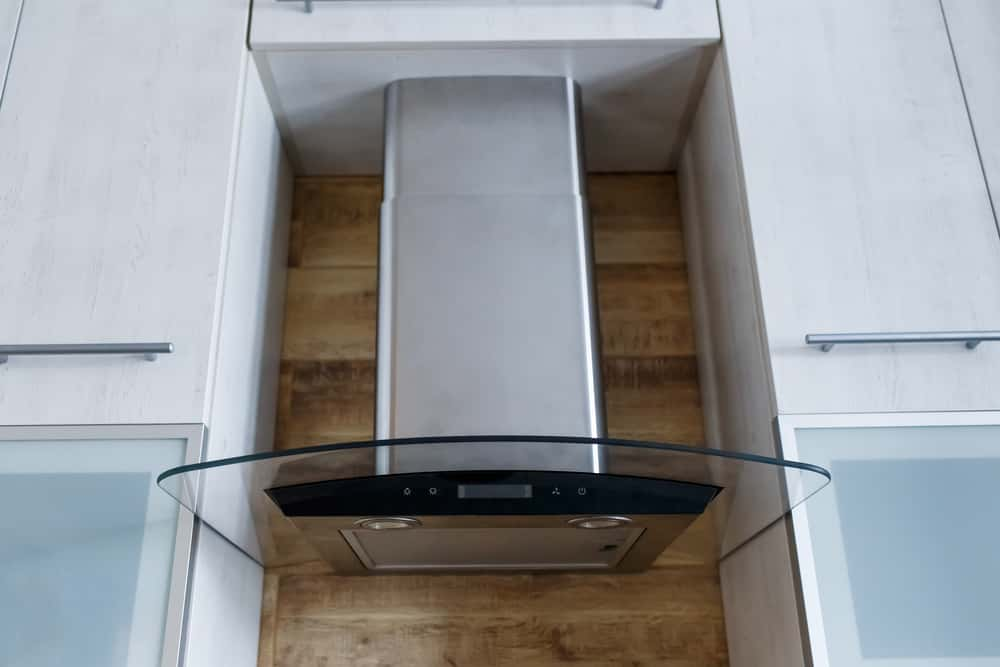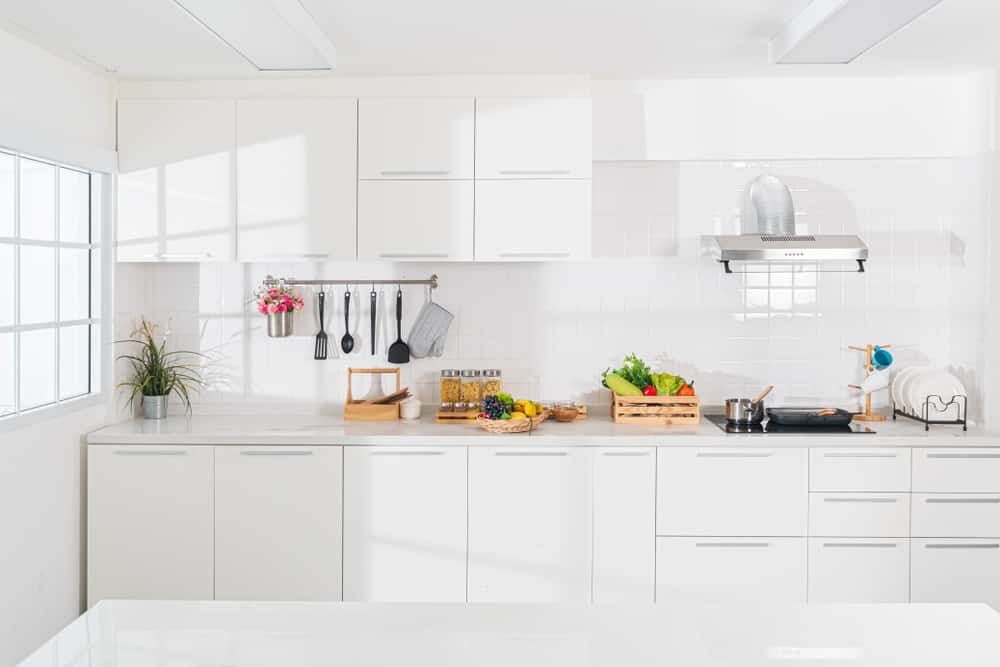The kitchen is one room that is generally not overlooked when it comes to remodelling your home. Although rarely considered, a chimney may be installed in your kitchen. A chimney placed in this room will go largely unnoticed, but it can be as important to the room as any other design element.

You should ask yourself what purpose you have for the installation and if there are limitations on where a chimney can be placed due to planning regulations or other concerns. There are some design considerations for kitchen chimney types as well, so keep reading to find out more!
Kitchen Chimney Types – An Overview
Chimneys are usually made of bricks, stones or concrete. They are available in a variety of shapes and sizes. The most common ones are straight and square, but you can also find them in circular as well as octagonal shapes.

The size of the chimney depends on the size of the firebox that is used in it. If you want to install a chimney, then you must follow the guidelines given below:
The height of the chimney should be about 1½ times the height of your cooking stove. If you want to install a tall wall oven with your cookstove, then make sure that your chimney is at least 18 inches above its top.
Make sure that for the kitchen chimney types, there is enough space around each side of your chimney flue so that air can flow freely through it. If there is not enough space around it, then it may result in back-drafting which can cause carbon monoxide poisoning if left untreated.
Different types of chimneys for kitchens are used to extract smoke from fireplaces or stoves, and they also allow heat to escape from the home. There are many different styles and designs for chimneys that can be used in kitchens.
What Do You Need to Consider Before Installing Kitchen Chimney Types?
Before you start installing a kitchen chimney, you need to consider what type of chimney is best for your kitchen. It’s important to get the right chimney for your home because it will affect how your kitchen functions and what it looks like.

You can use a chimney to vent your kitchen stove. You can also use it to create an over-the-range microwave. If you have an electric cooktop, you may not need a chimney at all. But what do you need to consider before installing kitchen chimney types?
Vent Type
The first thing to consider is the type of venting required for your home. There are two different types of stovepipes: round and rectangular. Round pipes are used for gas stoves, and rectangular pipes are for electric stoves.
Size of Chimney
The size of the chimney will depend on the size of your stove and whether or not you have any other appliances that need to be vented as well (such as an over-the-range microwave).
Consult with a professional if you are unsure about what size pipe you need for your particular configuration. They will be able to guide you in selecting the correct size pipe so that it fits properly into the existing flue and vents properly outside your home.

Location of Chimney
The location of your chimney installation is important because it needs to be located away from anything flammable (such as curtains) or flammable gases (like propane).
Top 10 Kitchen Chimney Types
Chimneys are a major component of any home and are used to take care of smoke, soot, and odour from the kitchen. They also allow for proper ventilation and air circulation in order to avoid bad odours, fire hazards, and other risks.
There are several kitchen chimney types that you can choose from for your kitchen, depending on what you need. Different types of kitchen chimneys include:
1. Single Flue Chimneys

These kitchen chimney types have one flue that goes up through the roof and exits out of it. It is usually made of brick or steel but can also be made from other materials, such as clay tiles or concrete blocks. This type of chimney is ideal when you only have one appliance that needs venting, like a stove or an oven.
2. Multi-Flue Chimneys

These kitchen chimney types have multiple flues that go up through the roof and exit out of it. It is usually made of brick or steel but can also be made from other materials, such as clay tiles or concrete blocks. This type of chimney is ideal when you have multiple appliances like stoves or ovens that need venting in your kitchen at the same time.
3. Flue-less Chimneys

These kitchen chimney types are not connected directly to a fireplace. Rather, their smoke goes up through the brickwork in an open-air flue made of concrete blocks or steel plates (called ‘canopy’). These can only be used if you live in an area where there is no fire code because they produce so much heat that they can cause fires if left on for too long.
4. Chimneys with Hoods

Kitchen chimney types with hoods are a very popular choice among homeowners. It is made up of two parts: the hood and the chimney itself. The hood is mounted on top of the chimney, which helps to direct smoke and fumes away from you when cooking. The hood also helps to keep your stovetop clean by reducing splatter and grease buildup.
5. Chimneys with Exhaust Fans

An exhaust fan is an excellent choice if you do not have much space in your kitchen because it saves space while still providing adequate ventilation for your stovetop. These kitchen chimney types come with an exhaust fan that blows away smoke, grease and odours from your kitchen so that they do not linger in your home throughout the day or night.
6. Masonry Chimneys

These kitchen chimney types are made out of brick or concrete blocks, and they come with either clay flue liners (which need regular maintenance) or stainless steel liners (which do not need regular maintenance). They are more expensive than stove-top chimneys, but they provide better airflow and smoke removal capabilities, which makes them ideal for large kitchens with several appliances.
7. Dual Flue Gas Chimneys

These kitchen chimney types have two flues which allow the heat to flow through the ovens and cookers in your modular kitchen chimney types. It is very efficient because it allows more than one cooking area or heat source to be used at once.
8. Electric Chimneys

The electric chimney heats up the water or cooks food by electricity. It is very easy to use and clean. You can use it at any time you want, and long as there is no power outage, you will be able to use it.
9. Prefabricated Metal Chimneys

It is made from sheet metal that has been formed into tubes, rings and flues. These kitchen chimney types are quick and easy to install, but they may not last as long as masonry chimneys because they don’t have as much reinforcement inside them.
10. Chimneys with Liners

A liner is a type of pipe that runs along the inside of a chimney and is used to catch soot and dirt particles which form when you burn wood or coal in your fireplace. Liners are usually made out of stainless steel, but they can also be made out of other materials such as plastic, PVC or aluminium. The advantage of having a liner in place is that it makes cleaning easier because you won’t have to worry about getting up close and personal with sooty walls when cleaning your chimney.
11. Gas Insert Chimneys
A gas insert, also known as a gas log or gas fireplace, makes use of gas or propane to create heat in order to generate flames inside a firebox located inside the fireplace itself.

The gas insert must be vented using either an exterior vent collar or an interior wood stove pipe that extends outside through the wall and connects it to an exterior vent stack which leads outside through your roofline.
12. Metal Chimneys

These chimneys are lighter than their masonry counterparts, making them easier to move around as needed during construction or renovation projects. They can also be installed on any type of building material, from traditional brick homes to log cabins and barns to prefabricated steel structures like a modular kitchens.
Wrapping Up
Oddly enough, chimneys considerably affect the personality and atmosphere in any given kitchen. No matter what style of chimney you choose, it will surely bring a rustic charm to your home. At HomeLane, we believe the kitchen chimney will undergo lots of smoke and particles when cooking. It is best to install a ventilation system adjacent to the kitchen chimney.

Ultimately, all chimney systems work the same way. Kitchen chimney types don’t require much care or maintenance and provide you with enough smoke ventilation to get your job done. You could add an insert if you want to improve the performance further. And one brand isn’t necessarily better than the others—it just depends on your situation and how much time you want to spend on upkeep and maintenance.
FAQs
1. Which type of kitchen chimney is best?
The type of chimney you choose for your kitchen will depend on several factors. The first is the type of fireplace you have. You can have a wood-burning or gas fireplace or an electric fireplace. The second factor would be the style of your house, as well as any other requirements from local building codes. Finally, the size and shape of your fireplace should also be taken into consideration.
There are many different types of chimneys available to choose from today, just as there are many different styles of fireplaces available to choose from. Some are very simple, and some are more complex in design and will require more time and effort to install properly into place
2. How much suction is good for the chimney?
The amount of suction in a chimney fire is the total difference between the pressure inside and outside the chimney. The greater the difference, the more suction will be created.
A small amount of suction may not be enough to draw water up through a pipe. This limits its use in fire sprinklers. A larger amount of suction can be achieved by increasing the size of the opening at the bottom of a chimney or by increasing air pressure on one side of it.
The pressure outside of a chimney may be increased by using fans or blowers to blow smoke up through it. This works well for smoking out insects from their nests but does nothing for drawing water up through pipes.
3. Which is better- a filter or a filterless chimney?
It depends on what you prefer: if you want a clean fireplace without having to worry about cleaning it yourself, then you should go for a filterless one. On the other hand, if you don’t mind cleaning it from time to time and want an efficient fireplace that won’t clog up too fast, then you should go for a filter type.
The decision about which type of chimney filter types is best for you depends on your budget and lifestyle. If you have pets or children in your house, it is recommended that you buy a filter-type chimney because they are easier to clean up than filterless ones. However, if you have a large family or like to cook often, then buying a filterless chimney would be better since it can handle larger amounts of smoke than a filter-type fireplace.




